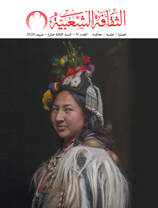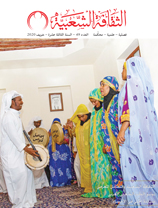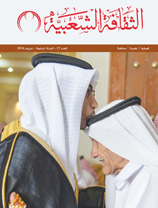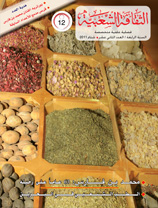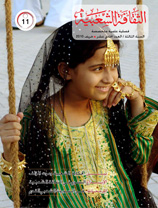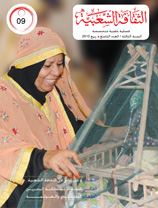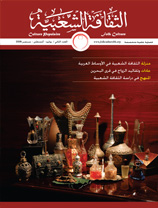Qamariyas: Yemen’s Multi-Coloured Stained Glass Windows
Issue 54
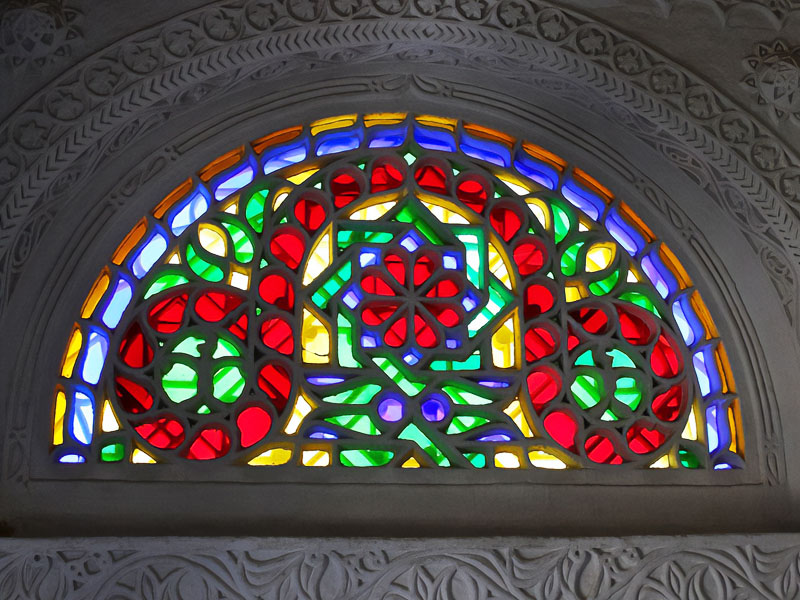
Muhammad Abduh Muhammad Saba’, researcher
Qamariyas, windows made of colourful stained glass, are considered one of the most important architectural elements in Yemen. They are widely used on the facades of Yemeni houses, especially in the northern and central governorates.
The availability of suitable materials led to the emergence of this type of window. In the past, Qamariyas were made from slices of transparent marble (alabaster), and they were circular or semi-circular windows used for lighting installed above movable wooden windows. The windows were fixed using ‘quad’, a material made by crushing and grinding a white stone of medium hardness that was widely available in the mountains of Yemen and mixing the powder into a substance similar to cement.
Old Yemeni palaces had semi-circular Arabian arches. This proves that Qamariyas are not a product of our times. They are still used for lighting in the old houses in Sana'a.
In the past, Qamariyas were made with qudad and transparent marble only. After coloured glass became easily available in Yemen, the Yemenis replaced the transparent marble with coloured glass and used stucco instead of qudad. It is said that coloured glass was first used in Qamariyas in the Mamluk, Fatimid and Ayyubid eras.
Sources confirm that when the Ottomans extended their rule to Yemen, the prosperity led to the widespread use of coloured glass in windows and Qamariyas. The Turks brought coloured glass to Yemen, and the Yemenis began to use coloured glass. The coloured stucco windows or Qamariyas have become an integral part of Yemeni architecture.
The mouldability of stucco played an essential role in the changing sizes and shapes of Qamariyas. The stucco windows were larger than the small marble ones, and the decorations and shapes were more diverse due to the ease of carving and engraving. In addition, the colours of the glass helped to transform the tiles into a painting, decorating the Yemeni home inside and outside. They have become a part of homes in Yemen, and in most Yemeni governorates, especially those in the north, it is rare to find a home without Qamariyas.
















